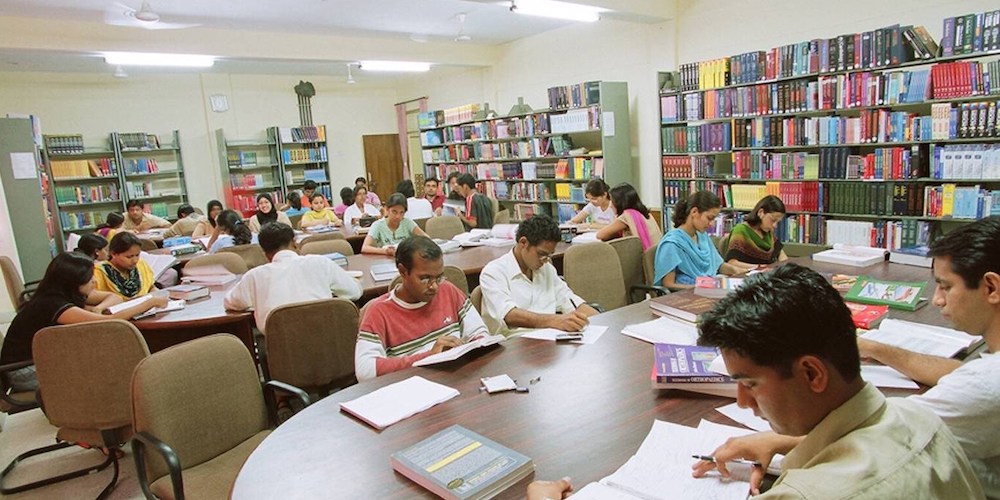Much-Needed Educational Reforms

The National Education Policy (NEP), which the government led by Prime Minister Narendra Modi unveiled in 2020, is said to be a defining moment in India’s journey towards revitalising its higher education landscape
Marking a comprehensive overhaul of the education system, the NEP 2020 is a visionary blueprint aimed at repositioning India among the leading higher education hubs of the world, the government claims.
India has a vast and growing higher education system, encompassing over 1,000 universities and 42,000 colleges. It is the second-largest higher education network globally. The system is overseen by the Ministry of Education and focuses on providing quality education through a three-tiered structure of universities, colleges, and courses. Key initiatives like the National Education Policy (NEP) 2020 aim to enhance inclusivity, multidisciplinary learning, and technology integration.
In a recent appraisal of the policy in general and higher education in particular, the government says that NEP 2020 has assured access, equity, quality, affordability, and accountability. It seeks to redefine both the structure and substance of education. While the school education reforms focus on foundational learning, curriculum renewal, assessment transformation, and holistic development, the higher education agenda lays emphasis on flexible multidisciplinary learning, institutional autonomy, quality research, and global integration.
For higher education in particular, the policy proposes a systemic shift from rigid silos to flexible, learner-centric models; from content-heavy instruction to critical thinking and research; and from fragmented regulation to a streamlined, empowered governance architecture.
Multidisciplinary and Flexible Higher Education
The National Education Policy (NEP) 2020 envisions a transformative shift in Indian higher education, promoting a learner-centric, flexible, and multidisciplinary ecosystem. This vision is being realized through a series of structural reforms and digital innovations:
Key Initiatives
• National Credit Framework (NCrF): Launched on April 10, 2023, NCrF enables credit accumulation from academic, vocational, and experiential learning. Adopted by 170 universities, it supports lifelong learning and smooth transitions across disciplines.
• National Higher Education Qualification Framework (NHEQF): Released on May 11, 2023, NHEQF defines learning outcomes from undergraduate to doctoral levels, ensuring national and international equivalence and mobility.
• Curriculum and Credit Framework for Undergraduate Programs: Introduced on December 12, 2022, this framework incorporates a choice-based credit system, multiple entry/exit options, and interdisciplinary learning pathways.

• Apprenticeship/Internship Embedded Degree Programs: Over 100 institutions now offer programs integrating industry experience, with at least 20% credits dedicated to internships/apprenticeships.
• SWAYAM Plus: This platform offers industry-aligned courses in emerging fields like AI and Data Analytics. The details of the same are provided in later sections
• National Apprenticeship Training Scheme (NATS 2.0): Disbursed Rs. 489 crore in stipends through 12.12 lakh DBT transactions, democratizing access to on-the-job training.
These initiatives collectively support a future-ready education system, aligned with global standards and responsive to evolving industry needs.
Multiple Entry and Exit (MEME)
The Multiple Entry and Exit (MEME) framework, a cornerstone of NEP 2020, to promote academic flexibility and reduce dropout rates. It empowers students to pause and resume education based on personal and professional needs, enhancing the Gross Enrolment Ratio (GER) and supporting lifelong learning.
• 153 universities offer multiple entry options, benefiting 31,156 UG and 5,583 PG students.
• 74 universities have implemented multiple exit pathways, aiding 25,595 UG and 2,494 PG students.
• 97 Centrally Funded Institutions (CFIs) have adopted MEME, with 33% of their courses offering MEME provisions.
Academic Bank of Credit (ABC)
The Academic Bank of Credits (ABC), facilitates academic mobility through a structured credit transfer mechanism, allowing students to pursue courses across multiple higher education institutions and accumulate credits towards a degree or diploma. It functions as a digital repository where academic credits earned by students are securely stored and easily accessible. This system promotes flexibility in learning and supports multidisciplinary education. Additionally, ABC enables the seamless integration of skills, knowledge, and learning experiences into a unified credit- based framework, empowering students with greater autonomy in shaping their academic journeys.
Biannual Admissions in HEIs
University Grants Commission (UGC) has approved Biannual Admissions according to which university admissions will now be done in two cycles: July/August and January/February. This reform replaces the traditional single-cycle model and aligns with NEP 2020’s goal of achieving 50% GER by 2035. It enhances student choice, institutional efficiency, and internationalization of Indian higher education.


